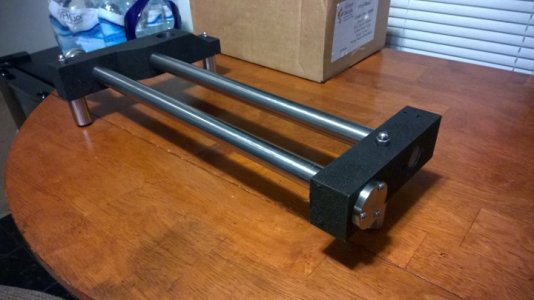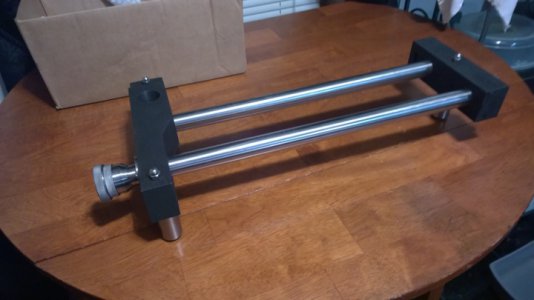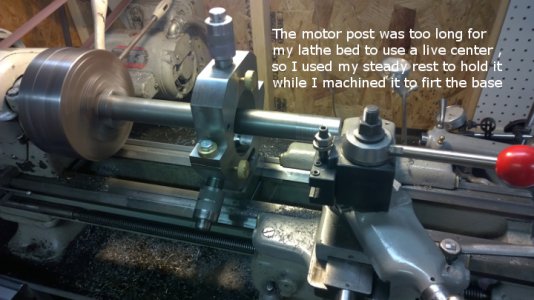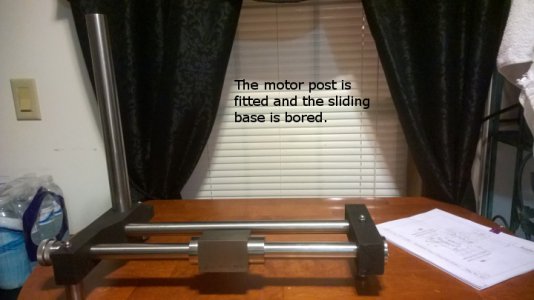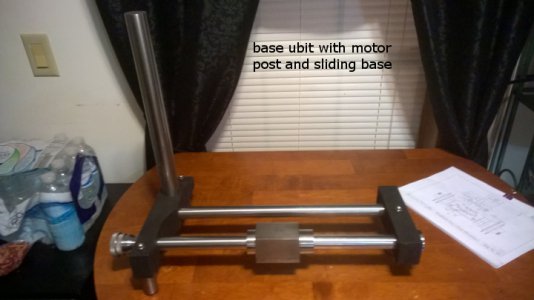Today I finished up the micrometer
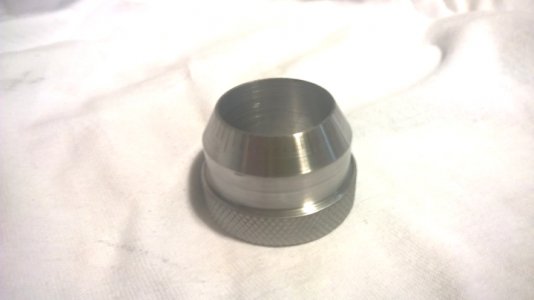
I don't know what happened to the photos of engraving the lines on the micrometer, but they got lost somewhere.

Oh well, I have shown engraving lines before, but since this micrometer has a 30 degree angle on the end , the compound had to be set to 30 degrees to engrave the lines. I will stamp the numbers later. These lines came out perfect and sharp but they are only .010" deep and hard to see unless the light is good. They will have to do though as it took two tries and about 2 1/2 hours to engrave them. they are the best I ever done, just not deep enough. there are 50 lines as the micrometer is .050" per turn.
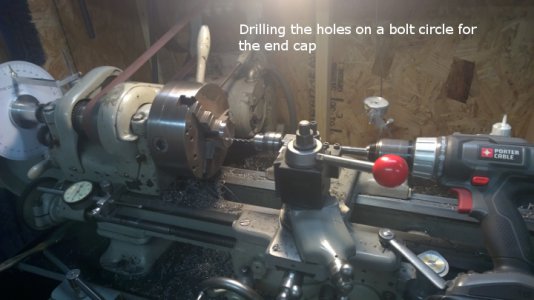
Here I am drilling three holes 120 degrees apart in the flange to mount the micrometer barrel on the base. Once again using my drilling jig for the lathe. My degree wheel is used to set the spacing. ( photo at end)
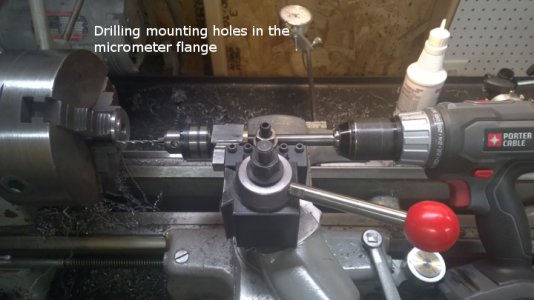
I also used the drilling jig to drill the three holes in the flange of the end cap for the micrometer bar.
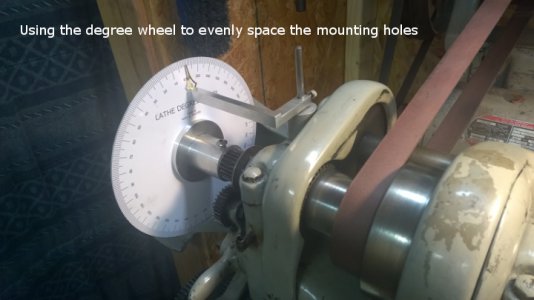
This photo shows the degree wheel setup to space the holes 120 degrees apart.
As I need a CRS bar 3/8" x 1 1/4" x 19" long and can't find one locally, I will be moving on to another part of the process until I locate a bar.
I started machining the sliding base which is the bottom half of the work head. It slides on the micrometer bar and holds the tilting work head. I chucked a piece of 2" x 2" x 4 5/8" bar stock in the 4 jaw chuck.
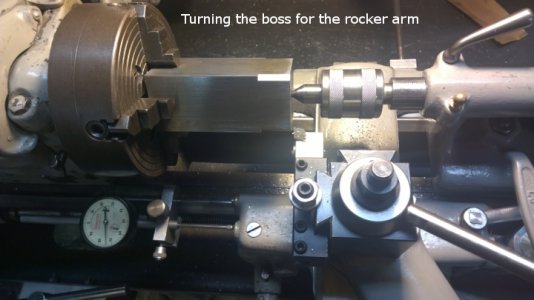
There needs to be a boss ( 1" long and mine will be 1.740" diameter ) on the end for the rocker arm. Refer to Drwg no. G2 & G4 in the prints. I am making this a little bigger and heavier than called for just because that is the material I have. This photo and the next shows turning that boss.
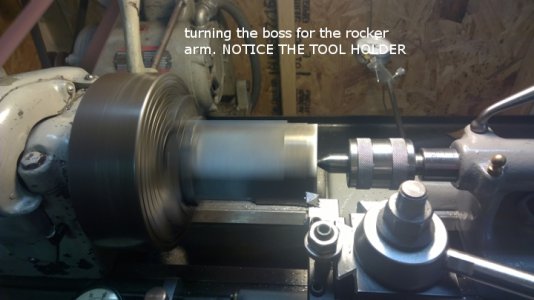
Notice the tool holder I am using to turn this. My new made tangential tool holder. I cut .050" per side cut and the tool did not slip on this interrupted cut ( I must have done something right

) )
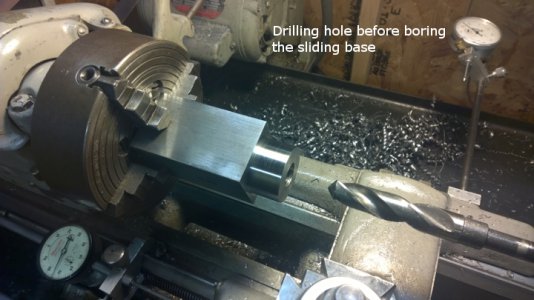
The next step is to drill the hole to 3/4" so I can get my 5/8" boring bar in it.
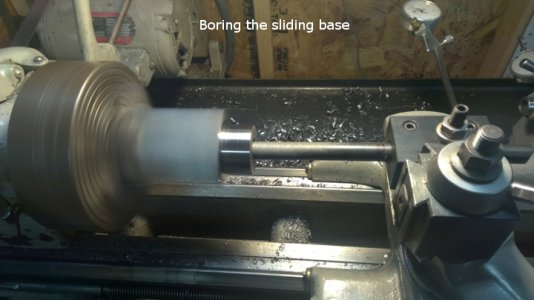
This shows boring the hole. All these steps needed done on the one setup to insure the concentricity of these surfaces. The other end gets a short boss but it will be done in the three jaw as it can be a few thousandths off and it won't matter. That boring bar has a lot of spring in it so it will take a lot of passes to get a straight hole. I will use a brake hone once I get close to finish it because it must be a perfect sliding fit on the micrometer bar.
I decided since the base ends are basically finished to paint them with the wrinkle finish. ( I forgot what a b***ch that stuff is to work with.) I painted them in the kitchen and baked them in the oven to get a good wrinkle. Needless to say ...... the Mrs. ain't happy :angry:. The house is full of fumes and she is hiding out in her room. Oh well.... she'll get over it ( and I took her out and bought her a new coat before I started to paint so she can't really complain about a few fumes :rofl:. ) I call that good planning.:rofl:
These two photos show the wrinkle finish. It is hard to see but after an hour in the oven at 225 degrees, it wrinkled really well. I got a few nicks here and there because with every surface painted and handling with wire hooks to hang them in the oven, I bumped the paint a couple times ( these parts are heavy). Once the shiny goodies are added , no one will notice the paint flaws. I ain't about to try and do them over. It looks just like the black wrinkle finish on a Starrett level or indicator body. I think it adds a lot of class.
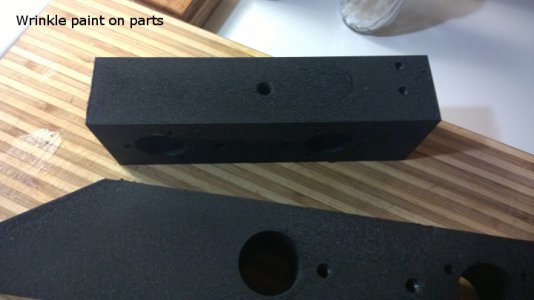
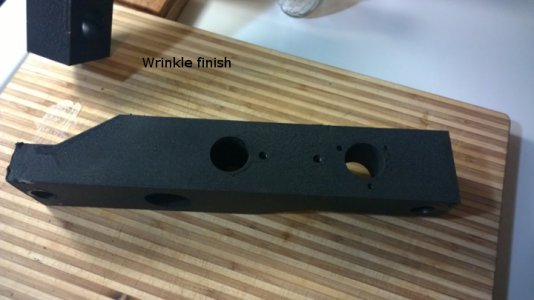
Depending on the weather tomorrow, I will resume working on the work head base.












 Oh well, I have shown engraving lines before, but since this micrometer has a 30 degree angle on the end , the compound had to be set to 30 degrees to engrave the lines. I will stamp the numbers later. These lines came out perfect and sharp but they are only .010" deep and hard to see unless the light is good. They will have to do though as it took two tries and about 2 1/2 hours to engrave them. they are the best I ever done, just not deep enough. there are 50 lines as the micrometer is .050" per turn.
Oh well, I have shown engraving lines before, but since this micrometer has a 30 degree angle on the end , the compound had to be set to 30 degrees to engrave the lines. I will stamp the numbers later. These lines came out perfect and sharp but they are only .010" deep and hard to see unless the light is good. They will have to do though as it took two tries and about 2 1/2 hours to engrave them. they are the best I ever done, just not deep enough. there are 50 lines as the micrometer is .050" per turn.








